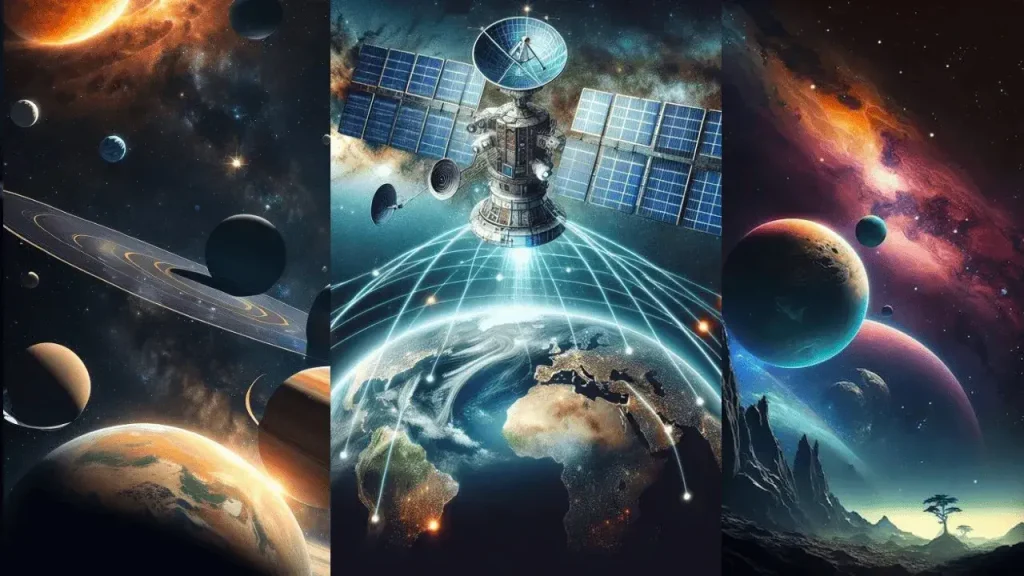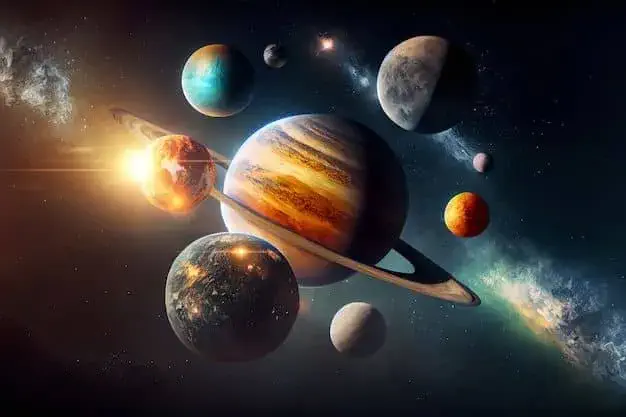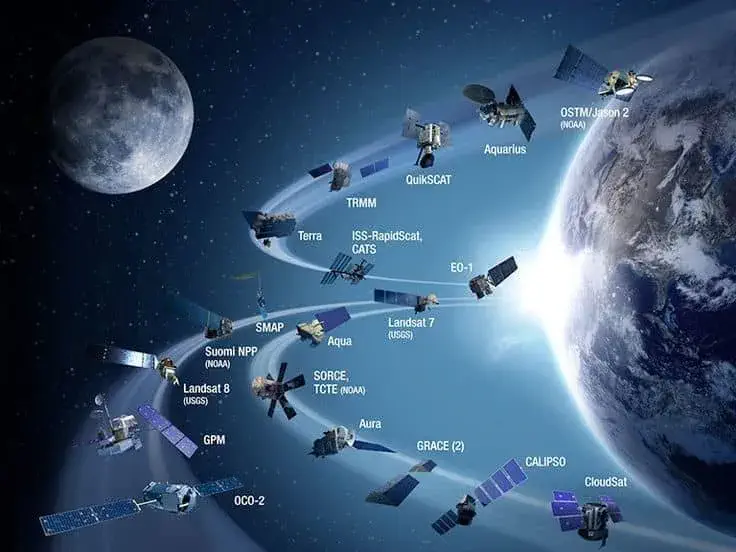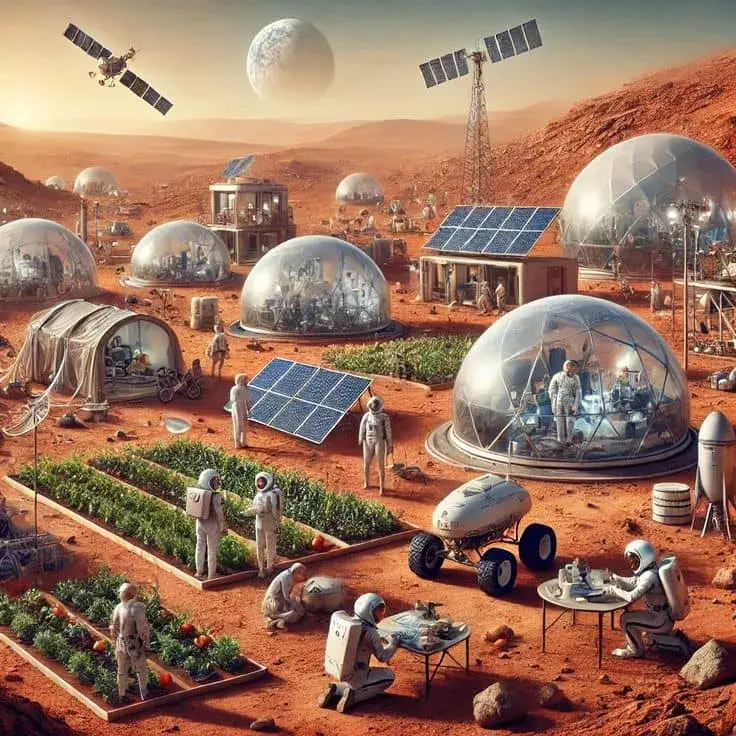
Imagine a world where the night sky holds no wandering stars or glowing moons—a static canvas devoid of celestial motion. Fortunately, our universe is anything but still. Planets and satellites, the dynamic actors of the cosmos, orchestrate a mesmerizing ballet of gravity and light. From the fiery inferno of Venus to the icy rings of Saturn, planets captivate our curiosity, while satellites—both natural and human-made—serve as silent sentinels, shaping life on Earth and beyond. Did you know astronomers have confirmed over 5,500 exoplanets in distant star systems, with some potentially harboring conditions for life? This article delves into the origins, diversity, and profound impact of these celestial bodies, exploring their advantages, challenges, and the future of cosmic exploration.
Table of Contents
What Are Planets and Satellites?
Defining Planets
A planet is a celestial body that orbits a star, is massive enough to be rounded by its own gravity, and has cleared its orbital path of debris. The International Astronomical Union (IAU) classifies planets into three categories:
- Terrestrial Planets: Rocky worlds like Earth, Mars, Venus, and Mercury.
- Gas Giants: Massive planets like Jupiter and Saturn, composed mostly of hydrogen and helium.
- Ice Giants: Uranus and Neptune, rich in water, ammonia, and methane ices.
Dwarf planets, such as Pluto, meet the first two criteria but haven’t cleared their orbits.
Defining Satellites
Satellites are objects that orbit planets or other larger bodies. They fall into two types:
- Natural Satellites (Moons): Earth’s Moon, Jupiter’s Ganymede, and Saturn’s Titan.
- Artificial Satellites: Human-made objects like the Hubble Space Telescope and GPS constellations.
The Diversity of Planets and Satellites
Types of Planets

- Terrestrial Planets: Characterized by solid surfaces and thin atmospheres (except Venus’s thick CO₂ layer). Earth’s active geology and Mars’ ancient riverbeds highlight their complexity.
- Gas Giants: Jupiter’s Great Red Spot—a storm larger than Earth—and Saturn’s hexagon-shaped polar vortex showcase their turbulent atmospheres.
- Ice Giants: Uranus’s sideways rotation and Neptune’s supersonic winds defy conventional planetary behavior.
- Exoplanets: Worlds beyond our solar system, like TOI-700 d, a rocky planet in its star’s habitable zone.
Types of Satellites

- Natural Moons:
- Earth’s Moon stabilizes our climate by moderating axial tilt.
- Europa (Jupiter) and Enceladus (Saturn) hide subsurface oceans, raising hopes for extraterrestrial life.
- Artificial Satellites:
- Communication: Starlink provides global internet access.
- Science: The James Webb Space Telescope peers into the universe’s infancy.
- Navigation: GPS satellites enable precision mapping and timing.
Formation and Evolution: From Stardust to Worlds
Planetary Birth
Planets form in protoplanetary disks—rings of gas and dust around young stars. Dust grains collide, clumping into planetesimals, which merge into protoplanets. Gravity then sculpts these into full-fledged worlds. Jupiter’s formation likely prevented a super-Earth from emerging in our inner solar system.
Satellite Origins
- Co-formation: Earth’s Moon arose from a collision with a Mars-sized body 4.5 billion years ago.
- Capture: Mars’ moons, Phobos and Deimos, may be captured asteroids.
- Artificial Deployment: Satellites like the ISS are launched via rockets and positioned in precise orbits.
Historical and Modern Exploration

Ancient Insights to Space Age Leaps
Ancient civilizations tracked planetary motions for agriculture and mythology. Galileo’s telescopic discovery of Jupiter’s moons in 1610 shattered Earth-centric views. The 20th-century Space Race birthed milestones like the Voyager probes and Apollo Moon landings.
Cutting-Edge Discoveries
- Exoplanet Hunting: NASA’s Kepler Mission identified thousands of planets, including Earth-sized candidates.
- Robotic Explorers: Perseverance Rover drills into Mars for signs of ancient life.
- Satellite Mega-Constellations: Projects like Starlink aim to globalize internet access but spark debates over space traffic.
Advantages and Disadvantages of Planets and Satellites
Pros of Planetary Studies
- Habitability Potential: Earth’s biosphere underscores the rarity of life-friendly conditions.
- Resource Opportunities: Asteroids and Mars may harbor minerals for future colonization.
- Scientific Insight: Venus’s runaway greenhouse effect informs climate models.
Cons of Planetary Environments
- Hostile Conditions: Venus’s surface melts lead, and Jupiter’s radiation belts are lethal.
- Distance Challenges: Proxima Centauri b, the nearest exoplanet, is 4 light-years away—a 6,000-year journey with current tech.
Pros of Satellites
- Global Connectivity: GPS enables navigation; weather satellites predict storms.
- Scientific Innovation: Hubble’s Deep Field image revealed thousands of galaxies.
- Economic Value: Satellite TV and broadband generate billions annually.
Cons of Satellites
- Space Debris: Over 36,500 trackable objects clutter Earth’s orbit, threatening collisions.
- Cost and Accessibility: Launching satellites demands billions, limiting access to wealthy nations.
- Light Pollution: Mega-constellations disrupt astronomical observations.
Conclusion: The Future of Celestial Exploration
Planets and satellites remain central to humanity’s quest to understand the cosmos. As missions like Artemis aim to return humans to the Moon and telescopes like James Webb unravel exoplanet atmospheres, the line between science fiction and reality blurs. However, challenges like space debris and ethical colonization demand global cooperation. Whether searching for life on Europa or deploying sustainable satellites, our next steps must balance innovation with stewardship.
You Might like
List of Top 10 Geography Articles
List of Top 10 Culture Articles
Frequently Asked Questions
What’s the difference between a moon and a satellite?
All moons are natural satellites, but “satellite” also refers to human-made objects. For example, Earth’s Moon is a natural satellite, while the ISS is artificial.
How do planets form?
Planets coalesce from gas and dust in protoplanetary disks. Gravity pulls particles into planetesimals, which collide to form protoplanets and eventually planets.
Why isn’t Pluto a planet anymore?
In 2006, the IAU reclassified Pluto as a dwarf planet because it hasn’t cleared its orbit of debris.
Can space debris affect Earth?
Most debris burns up in the atmosphere, but large pieces risk damaging satellites or the ISS. Mitigation efforts include deorbiting defunct satellites.
Could humans live on other planets?
Mars is a candidate for colonization due to its proximity and resources, but surviving its thin atmosphere and radiation requires advanced technology
Explore Further:
